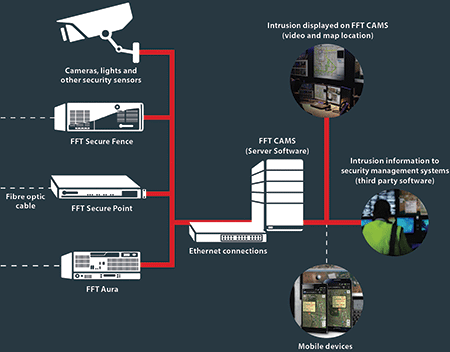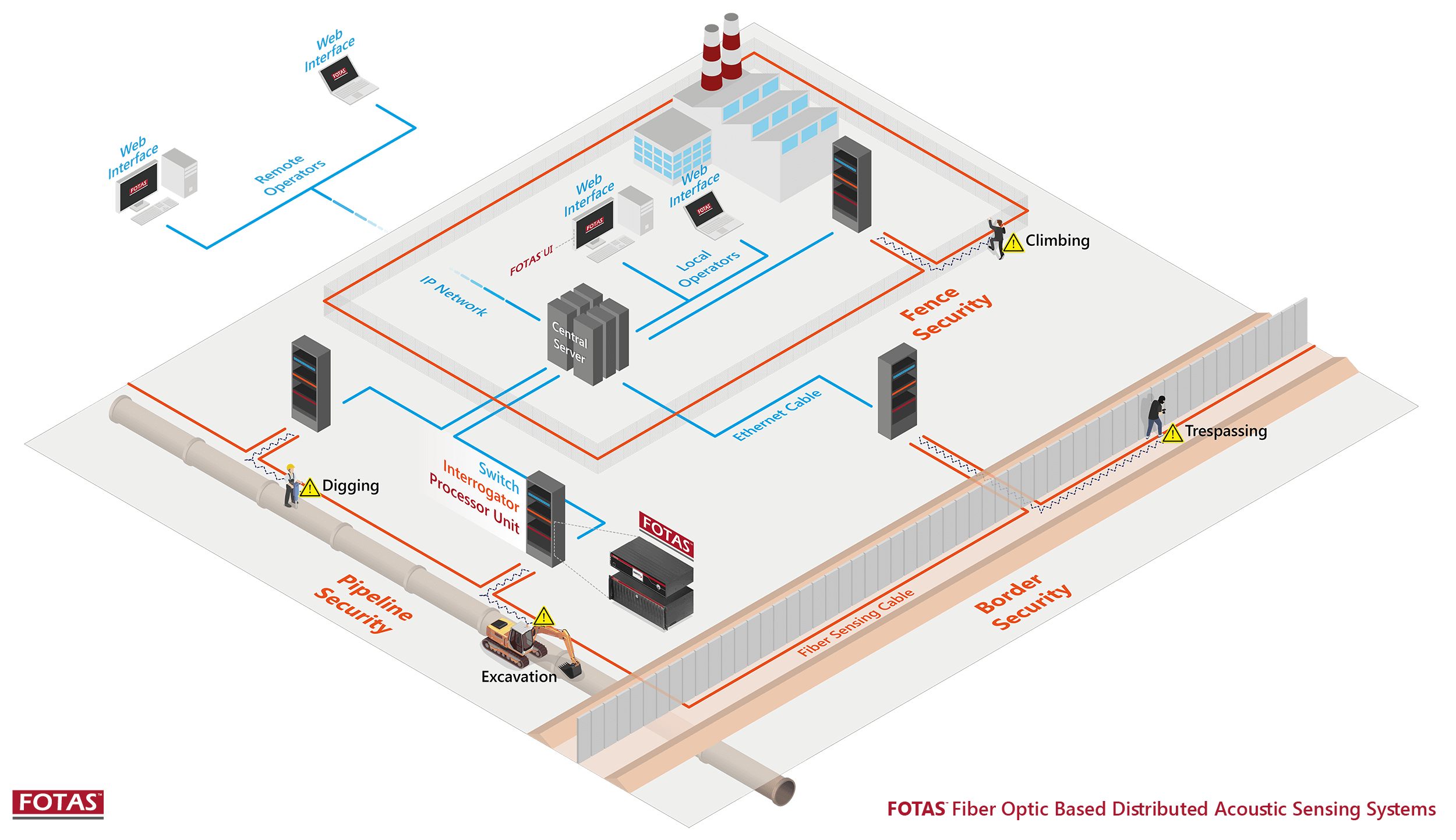Fiber Optic Security System: The Ultimate Solution for Your Business’s Security Needs
Why Fiber Optic Protection Solutions Are the Future of Security
The change to fiber optic protection systems notes a considerable advancement in the world of defense, driven by their outstanding information transmission capacities and durability to exterior disturbances. As the landscape of safety and security progresses together with arising innovations such as AI and IoT, the possibility for fiber optics to improve and redefine safety and security frameworks comes to be increasingly apparent.
Advantages of Fiber Optic Systems
One of the primary benefits of fiber optic systems is their superior data transfer ability, which facilitates the transmission of big quantities of data over cross countries without substantial loss. This particular is particularly useful for safety applications that call for the continuous surveillance and transfer of high-definition video clip feeds, sensor information, and other vital details. Optical fiber can accommodate the growing demands of modern-day security systems, ensuring that information continues to be intact and dependable.
In addition, fiber optic cords are less susceptible to electro-magnetic disturbance, which can be a significant issue in settings with numerous electronic devices. This resistance enhances the integrity of the information being transferred, therefore decreasing the risk of information violations or system failings. Moreover, fiber optic systems are inherently extra secure than conventional copper cords, as touching right into a fiber optic line without discovery is exceptionally difficult.
The sturdiness of fiber optic cable televisions also adds to their appeal. They are immune to environmental factors such as dampness and temperature fluctuations, reducing upkeep expenses and enhancing system longevity. Overall, these advantages placement fiber optic systems as a robust and effective selection for modern-day safety and security infrastructures, ensuring reliable and secure information transmission.
Boosted Information Transmission Rate

The ability to send vast quantities of information swiftly facilitates the seamless assimilation of high-def video feeds and advanced analytics. Safety and security systems can currently refine and analyze details in real-time, improving feedback times and situational recognition. Additionally, fiber optic links support longer transmission ranges without deterioration of signal high quality, making them perfect for expansive protection networks.
The boosted speed of fiber optic systems not just enhances the effectiveness of protection procedures yet likewise reduces latency. This is specifically essential in important circumstances where timely decision-making can avoid safety and security violations or reduce potential hazards. As organizations continue to focus on safety and security and efficiency, the need for fast and trustworthy information transmission will definitely solidify fiber optic systems as a foundation of modern-day protection infrastructure.
Resistance to Interference
Fiber optic security systems continually show phenomenal resistance to electro-magnetic disturbance, an important advantage in environments vulnerable to electronic sound. Unlike standard copper cables, which can be adversely affected by magnetic fields, radio frequency interference, and various other types of electrical disruption, fiber optic cords make use of light to transmit information. This intrinsic residential property guarantees that the signals remain clear and unaltered, no matter surrounding digital task.
The usage of glass or plastic fibers in fiber optic technology produces a barrier against interference, permitting for dependable information transmission also in tough situations such Visit This Link as industrial centers, urban locations with high digital web traffic, or places near radio towers. This characteristic substantially decreases the chance of signal deterioration or loss, making fiber optic systems specifically ideal for security applications where stability and precision of information are vital.
Moreover, this resistance to interference improves the total performance and reliability of safety systems, ensuring that surveillance and sharp systems operate seamlessly. In a world where safety and security is significantly intimidated by innovative innovations, the durability of fiber optic systems attracts attention as a critical attribute, strengthening their standing as a vital part of modern security facilities.
Cost-Effectiveness Over Time
Substantial price financial savings can be accomplished over time with the execution of fiber optic safety and security systems. While the initial investment may seem higher contrasted to standard copper-based systems, the long-term economic benefits emerge via minimized operational and upkeep prices (fiber security). Fiber optic cords are inherently more long lasting and less prone to ecological aspects, which equates to reduce substitute and fixing expenses over their lifespan
In addition, fiber optic systems call for less power to operate, which further lowers power costs. Improved data transmission capabilities enable less repeaters and amplifiers, lessening equipment financial investment and enhancing setup processes. The scalability of these systems additionally adds to cost-effectiveness, as companies can increase their protection infrastructure without sustaining considerable added costs.
An additional aspect to take into consideration is the increased effectiveness in monitoring and reaction abilities that optical news fiber supply. Enhanced real-time information transmission can bring about quicker event reaction times, potentially mitigating losses and obligations connected with safety breaches. Altogether, the long-term advantages of fiber optic security systems not only warrant the preliminary expense but likewise position them as an economically prudent choice for organizations seeking durable security services.

Future Developments in Safety And Security
Advancing technologies are set to change protection systems, incorporating fabricated knowledge (AI) and machine knowing to improve danger discovery and action capabilities. These technologies will permit safety and security systems to analyze vast amounts of data in real-time, recognizing patterns and abnormalities that indicate possible risks. This proactive approach will allow faster decision-making and a lot more reliable case actions.
In addition, the incorporation of the Net of Things (IoT) is leading the way for interconnected security gadgets, supplying extensive surveillance and surveillance. Smart sensing units can relay information regarding ecological changes, while automated notifies can alert safety workers immediately of questionable click to read tasks.
In addition, the evolution of biometric innovations will certainly better reinforce protection devices. Face recognition, fingerprint scanning, and retina identification are coming to be more advanced, supplying layers of authentication that are challenging to bypass.
Final Thought
To conclude, fiber optic protection systems stand for a substantial advancement in security modern technology, supplying exceptional information transmission speed, resistance to electro-magnetic disturbance, and lasting cost-effectiveness. As the need for innovative protection services continues to grow, the assimilation of optical fiber with arising technologies such as AI, IoT, and biometrics will certainly additionally boost security facilities (fiber security). The combination of these developments will certainly make sure an extra secure and responsive setting, strengthening optical fiber as a cornerstone of future protection systems